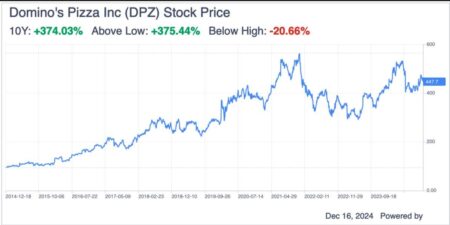Gold’s unrivaled history, dating back to ancient empires, has proven it to be an asset that can thrive during both stability and crisis. While this alone should be convincing enough to own it in one’s portfolio, adding Harry Markowitz’s Modern Portfolio Theory (MPT) [1] into the equation, makes gold as a strategic asset undeniable.
The precious metal offers more than just a hedge against uncertainty; it provides diversification rooted in its unique relationship with equities and bonds. By exploring gold’s storied past, its fit within MPT, and its performance under market stress, we uncover how we believe gold can make your portfolio great again.
Historical Significance of Gold
Gold’s story is as old as civilization itself. Peter L. Bernstein captures its allure in The Power of Gold, chronicling its role as both a symbol of divine power and a cornerstone of wealth. From the temples of ancient Egypt, where it is revered as the “flesh of the gods,” to its central role in the Roman Empire’s trade networks, Berstein argues that gold has always transcended its physical form to represent stability and trust.
Gold’s use as a currency stretches back to 500 BC when Darius the Great minted the first gold coin — the “daric”, a standard of value that persisted for millennia. Nathan Lewis, in Gold: The Final Standard, reminds us that the modern era, where major currencies lack gold backing, is a historical anomaly. Before 1971, gold served as a universal anchor for monetary systems.
James Rickards adds clarity in The New Case for Gold, dispelling misconceptions around John Maynard Keynes’ infamous “barbarous relic” comment. According to Rickards, Keynes wasn’t condemning gold itself but critiquing the rigid gold exchange standard of the 1920s. These nuances underline gold’s timeless role — not just as a commodity but as a foundation of financial systems across centuries.
Gold in Modern Portfolio Theory
Harry Markowitz’s Modern Portfolio Theory (MPT), for which he won a Nobel Prize, reshaped investment management by showing that optimizing a portfolio isn’t just about considering the risk and return of individual assets – but how those assets move in relation to one another. Gold, with its unique properties, is an exceptional fit within this framework for the following reasons:
- Low Correlations: Historically, gold has exhibited minimal correlation with traditional financial indices. Since the 1970s, its monthly correlations with the S&P 500 and Bloomberg US Aggregate Bond Index have been just 0.01 and 0.09, respectively. This low correlation is more important than ever, as US stocks and bonds have been exhibiting their most prolonged period of positive correlation to each other since the 1960s. Understanding this will help to avoid a false sense of diversification via the traditional 60/40 portfolio, as was the case for many investors in 2022.
- Efficient Frontier Boost: The efficient frontier is like finding the “sweet spot” in your portfolio where every bit of risk you take is put to the best possible use. By adding gold to a portfolio, that sweet spot can shift upward and to the left, delivering higher returns for a given level of risk or, conversely, reducing risk for a desired return [2].
At the heart of MPT lies the principle of diversification – combining assets that respond differently to the same market conditions to lower overall portfolio risk. Stocks in the same sector tend to move in tandem, rising or falling together, whereas gold frequently exhibits an inverse or independent movement from these patterns. This behavior should make gold an invaluable component of a Markowitz-inspired portfolio.
Gold’s Performance During Market Stress
During market turmoil, gold has acted as more than just a stabilizer, providing a counterbalance to declines in traditional assets.
- Historical Performance: An analysis of the ten largest S&P 500 declines over the last 40 years reveals gold’s standout resilience. While the index fell by an average of 28%, gold gained nearly 7% — a performance that few assets can rival in times of crisis. In this same period, if you isolate months in which the S&P 500 delivered a negative return, gold exhibited a negative correlation while bonds exhibited a positive correlation with the S&P 500 [3].
- Safe Haven Properties: During the 2008 financial crisis, gold briefly dipped alongside other assets as liquidity dried up. Yet it quickly rebounded, finishing the year with a 10% gain [3]. This behavior highlights gold’s capacity to serve as a reliable safe haven in even the most severe market stress.
Gold’s Role in Different Economic Scenarios
While gold has proven to be beneficial in all environments over the long-term, certain conditions enable the yellow metal to shine brilliantly.
- Negative Real Interest Rates: When real Treasury rates dip into negative territory, gold consistently outperforms. Annualized returns in these scenarios have exceeded 31%, placing gold in the upper echelon of traditional asset classes [3]. Inflationary environments (which often coincide with negative real rates) also support gold. Its ability to retain value while other assets lose purchasing power cements its appeal.
- Commodity Bull Markets: Gold’s versatility extends to commodity cycles. In bull markets for commodities, it has ranked as the second-best performer [3], proving it as an effective substitute for broader commodity exposure.
The Fourth Turning: Navigating the Crisis Era
Neil Howe’s The Fourth Turning Is Here offers a compelling framework for understanding the turbulence of our times. He argues that we’re in a period of profound transformation, marked by upheaval across societal, economic, and institutional dimensions. For investors, this theory carries significant implications.
- Societal Upheaval: Howe foresees the potential for unrest, ranging from insurrection to authoritarian shifts, as societies grapple with intensifying divisions. Such instability often drives a flight to assets that inspire trust and stability – gold chief among them.
- Economic Instability: The Fourth Turning signals economic disruption, with uneven income growth and widespread insecurity. In these periods, assets that maintain value amidst volatility gain heightened importance.
- Institutional Distrust: As long-standing institutions lose credibility and relevance, investor sentiment can shift dramatically towards tangible, time-tested assets like gold.
The dynamics highlight the necessity of a robust, diversified investment approach that’s designed to weather systemic shifts. In times of transformation, gold’s historical reliability positions it as a cornerstone for managing uncertainty and preserving wealth.
The Golden Deal
Gold’s role in a portfolio goes far beyond its historical mystique or reputation as a store of value. Its unique combination of low correlation with traditional assets to consistent performance during periods of heightened volatility make it an essential tool for navigating today’s increasingly unpredictable financial landscape.
Incorporating gold isn’t about chasing market trends – it’s about embracing a time-tested asset. Gold shines where other investments falter: shielding against inflations, thriving in periods of negative real interest rates, and providing stability during geopolitical upheaval.
As Neil Howe’s Fourth Turning reminds us, we are in an era of profound disruption – making gold’s role even more essential. It provides the certainty that investors seek when confidence in traditional systems wavers.
The art of integrating gold into a portfolio, guided by Markowitz’s principles, lies in enhancing diversification to improve risk-adjusted returns. In an era of rising uncertainty, where long-held market relationships are unraveling, we think gold remains indispensable – not just for preserving wealth but for making your portfolio great again.
Read the full article here
















